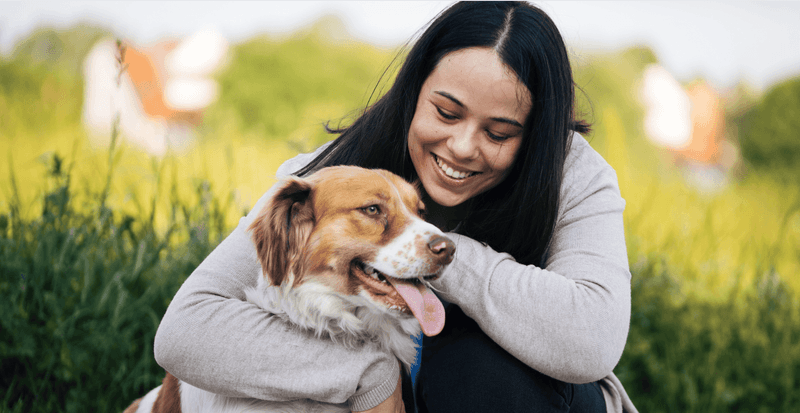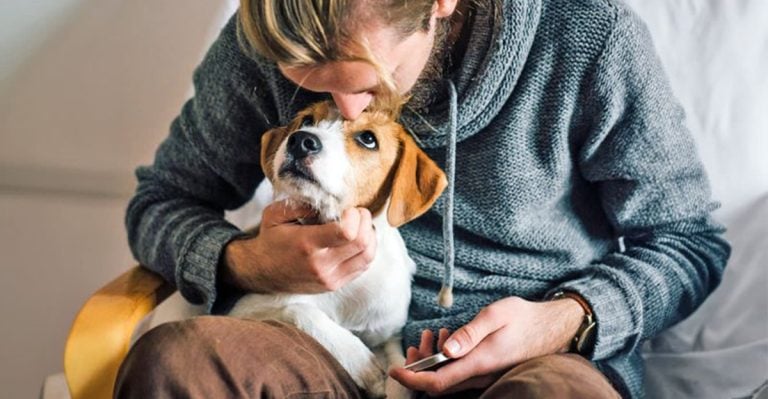14 Tips to Raise an Emotionally Intelligent Dog From Puppyhood
Imagine raising a dog who can read the room, sense your mood, and respond with comforting calm or joyful excitement.
That’s not just good luck—it’s the result of emotional intelligence, and yes, dogs can develop it. Emotional intelligence in dogs shows up as self-control, empathy, resilience, and an ability to navigate the world with confidence.
It doesn’t just happen on its own—it’s something you can nurture from puppyhood, starting the moment you bring them home.
By understanding their emotional needs and supporting their growth, you raise more than a “well-behaved pet.” You raise a responsive, connected companion who feels safe expressing themselves and reading your signals too.
Here’s how to foster emotional intelligence in your dog from the very start—so they thrive not just behaviorally, but emotionally too.
1. Start with Consistent, Gentle Socialization
Imagine your pup, tail wagging, as they explore a bustling park filled with friendly faces and wagging tails. Socialization shouldn’t be rushed; rather, it should be a gentle introduction to the world.
Start exposing your new furry friend to varied environments, sounds, and sights. This helps them grow up feeling secure and unafraid of the unfamiliar. Socializing in a positive and controlled manner is crucial.
The more diverse experiences they have, the more adaptable and emotionally intelligent they become.
This sets a solid foundation for their future. Encouraging these interactions helps your puppy learn confidence and trust in the world around them.
2. Read and Respond to Your Puppy’s Emotional Cues
Puppies might not speak our language, but they communicate volumes through their expressions and body language. Have you ever noticed a subtle change in their demeanor?
Paying close attention to these cues can make all the difference. For instance, a tucked tail or lowered ears might signal discomfort. Responding with empathy fosters trust.
It’s about noticing the little things and reacting in a way that reassures them. This teaches your puppy that they are heard and understood, laying a foundation for a trusting relationship.
3. Teach Self-Regulation Through Calm Reinforcement
Picture a young puppy, initially bouncing with energy, learning to sit patiently for a treat. Reinforcing calm behavior is a powerful tool.
By rewarding moments of tranquility, such as when your puppy sits quietly or waits patiently, you’re teaching them to manage their impulses.
This kind of training doesn’t happen overnight, but with consistency, your puppy learns self-control. This skill is invaluable as they grow, helping them adapt to various situations in life.
4. Practice Name Recognition and Eye Contact
Names are not just for calling; they’re a key to attention and connection. Ever noticed how a puppy lights up when you say their name with love?
Training your puppy to respond to their name and make eye contact strengthens your bond. This simple practice fosters communication.
It’s about more than obedience; it’s about building a dialogue. As they learn to look to you for cues, trust blossoms.
5. Use Positive Reinforcement, Not Punishment
Rewards speak louder than reprimands, especially to a curious puppy eager to learn. Instead of focusing on what they do wrong, highlight their achievements with treats and praise.
This approach builds a secure and confident dog, eager to explore and learn without fear. Punishment can sometimes lead to fear, stifling their natural curiosity.
Positive reinforcement encourages a puppy to try new things and understand boundaries naturally, creating a joyful learning environment.
6. Provide a Safe Space for Decompression
Imagine a little sanctuary where your puppy can retreat from the hustle and bustle of daily life. Just like us, puppies need their quiet time.
Creating a safe and cozy spot for them to decompress teaches them to self-soothe. It’s their private haven to relax and recharge.
By respecting their need for downtime, you nurture their emotional independence and resilience. It’s a place where they feel secure and comforted.
7. Introduce Basic Emotion Words Through Tone and Association
Words carry weight, especially when paired with tone. Imagine saying “It’s okay” softly during a thunderstorm.
Your puppy learns to associate those tones with emotional states. This is a subtle yet powerful way to communicate.
Consistent phrases help them understand the world around them. Over time, this builds a shared language between you and your dog.
8. Model Emotional Regulation Yourself
Dogs are keen observers of human behavior. They often mirror our emotions and actions.
By maintaining your composure during chaotic situations, you teach your puppy to remain calm too. Your demeanor becomes a guiding example.
This mirroring effect helps them adapt to stressful situations with grace. It’s a lesson in emotional regulation that they carry throughout their lives.
9. Rotate Toys and Games That Encourage Problem Solving
A playful mind is a sharp mind. Regularly switching up toys and games keeps your puppy engaged and mentally stimulated.
Puzzle toys and interactive games are not just fun; they challenge your puppy’s brain, fostering problem-solving skills.
This variety prevents boredom, reduces frustration, and builds confidence. It’s a delightful way to nurture their growing intelligence.
10. Encourage Independent Play Without Anxiety
Building a puppy’s independence is essential, but it should be done with care to avoid anxiety.
Short periods of separation help them become comfortable being alone. Gradually increasing this time fosters confidence.
This practice is about balancing attachment and autonomy, ensuring they grow into secure, independent dogs.
11. Normalize and Gently Manage Mistakes
Mistakes are part of learning, and every puppy stumbles along the way. How we handle these moments shapes their emotional growth.
Instead of reacting with frustration, use calm redirection. This teaches them that mistakes are okay and part of the process.
With patience, your puppy learns resilience and the ability to bounce back from setbacks. It’s about nurturing a positive mindset.
12. Encourage Appropriate Expression of Emotions
It’s natural for puppies to have fears, such as loud vacuums or sudden noises. Guiding them through these emotions helps them grow.
Rather than suppressing their fears, validate them and gently encourage curiosity. This builds courage over time.
Helping your puppy express and manage their emotions lays a foundation for emotional maturity.
13. Practice Empathy-Building Through Cooperative Activities
Teamwork creates a bond that’s hard to break. Engaging in cooperative activities like agility or grooming enhances connection.
These shared experiences teach empathy and understanding. Your puppy learns to read your cues and respond accordingly.
Such activities are not only fun but they lay the groundwork for a deeply empathetic relationship.
14. Be a Secure Emotional Anchor
Every dog needs an anchor, someone they can rely on. Consistency in your routine and presence provides that security.
Being their emotional anchor means being there during highs and lows, offering stability.
This creates a sense of belonging and trust, essential for their emotional well-being. Your puppy will thrive knowing they have a steadfast companion.




















